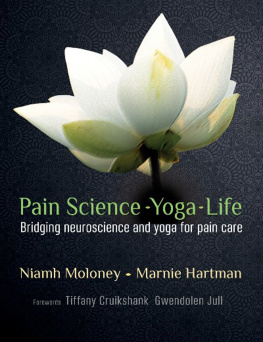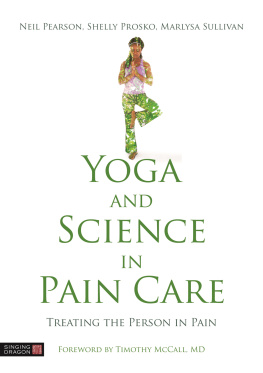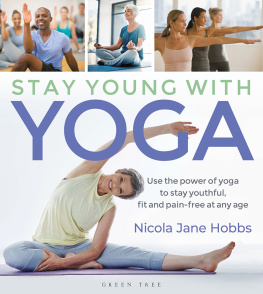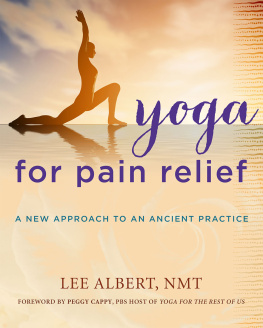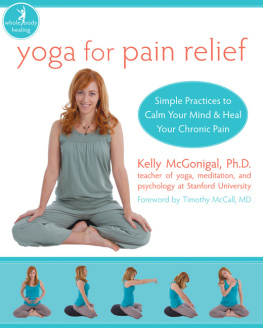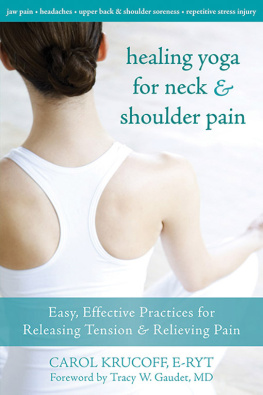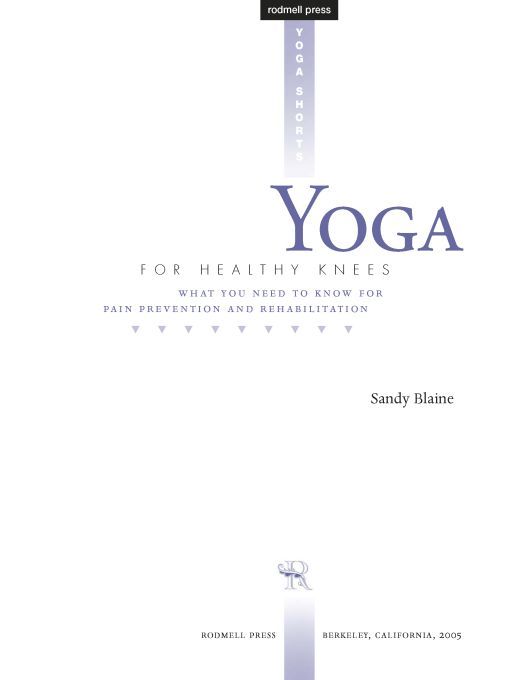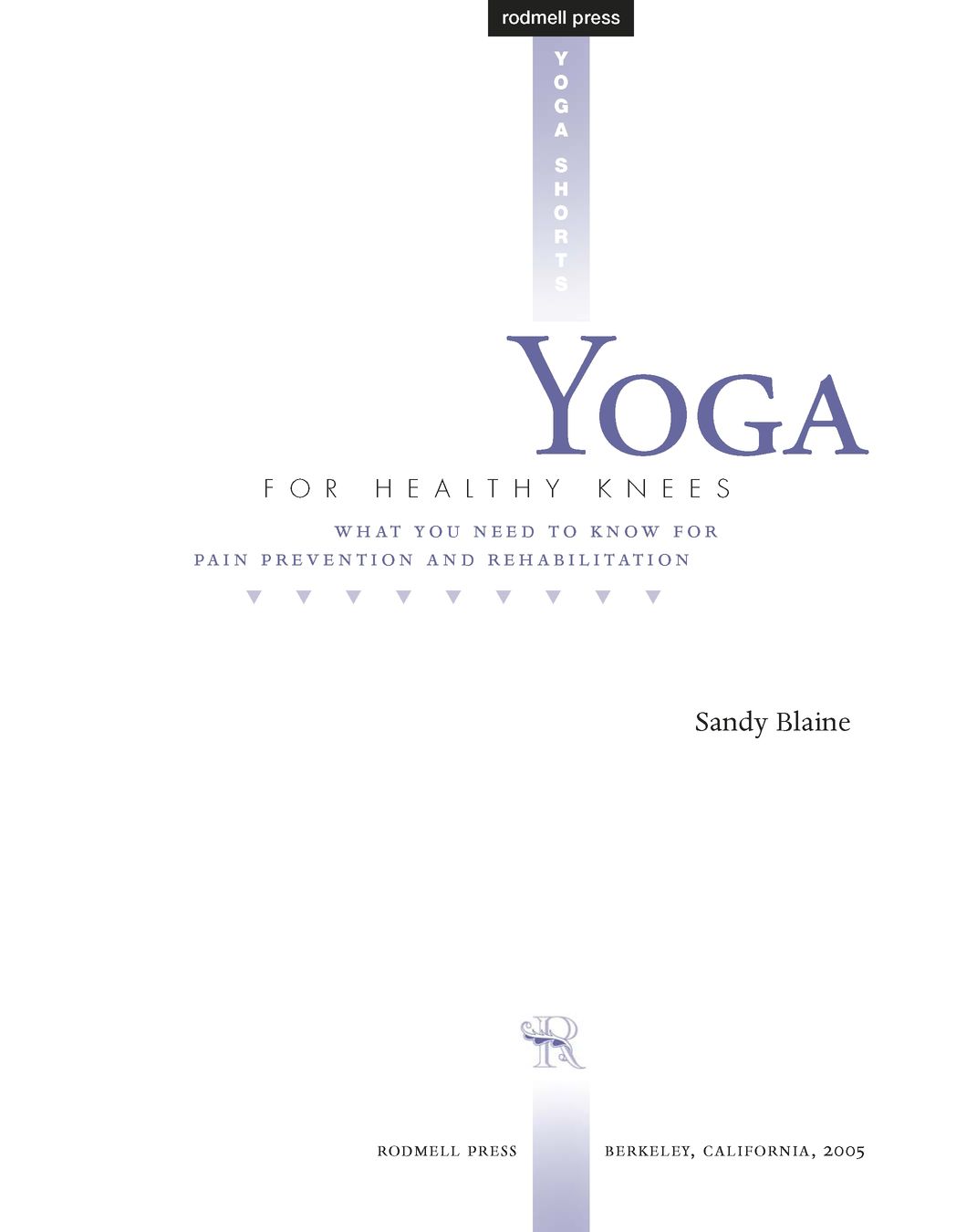Table of Contents
Praise forYoga for Healthy Knees
Yoga for Healthy Knees is a highly readable and practical guide for those seeking information about safe yoga practice for their knees. A must-read for anyone interested in knee rehabilitation and for yoga teachers, too.
Cyble Tomlinson, codirector of the Berkeley Yoga Center; author of Simple Yoga
Sandy Blaines Yoga for Healthy Knees is doubly interesting. It describes how she overcame her own knee pain using yoga poses. It also teaches the reader about safe movements and specific poses that can protect and improve their own knees as well. I recommend this book for its clarity, organization, and positive attitude of healing.
Judith Hanson Lasater, Ph.D, P.T., yoga teacher; author of 30 Essential Yoga Poses: For Beginning Students and Their Teachers
Rodmell Press Yoga Shorts Series
Yoga for Pregnancy by Judith Hanson Lasater, Ph. D., P.T.
Yoga for Healthy Knees by Sandy Blaine
Yoga Abs by Judith Hanson Lasater, Ph. D., P.T.
with more to come...
To those who have passed on the gifts of yoga throughout millennia: my yoga teacherspast, present, and to comeand to their teachers.
Acknowledgments
I am so excited and grateful to have had the opportunity to write my first book. I have many people to thank for helping me bring this work to life.
First and foremost, I thank publishers Donald Moyer and Linda Cogozzo at Rodmell Press for their support and guidance along the way. In addition, Donald has been one of the primary teachers in my life. I thank him for teaching me that yoga in the style of B. K. S. Iyengar is a mindfulness practice, and for mentoring me throughout the years with a generosity of spirit that I will always be grateful for.
Many other wonderful yoga teachers have guided me along the way. What I have learned from each has contributed to shaping my own evolving practice and this book. In particular, I appreciate Amy Cooper, John Friend, Judith Hanson Lasater, Tim Miller, Jill Edwards Minye, Leigha Nicole, Sarah Powers, Erich Schiffman, and Mary Lou Weprin.
I gratefully acknowledge Wendy Lichtman, my wonderful writing teacher. In addition, I appreciate all the women and fellow writers who have been in her writing groups with me. I have participated in Wendys classes on and off for several years, and the list of writers in these groups is too long to name here. Know that I carry your stories and lessons with me. I especially thank Joan Steinau Lester for sharing her time and editing skills as I worked on various writing projects throughout the past few years.
Thank you to my dear friend and wordsmith extraordinaire, Clive Chafer, for his support, contributions, and last-minute brain-storming.
Thank you also to Judith Hanson Lasater and Cyble Tomlinson, who were the books first readers outside of the publishers, for their support, insight, and contributions.
I express my gratitude to those whose work you see in these pages: photographer David Martinez, for his beautiful work; model and yogini Deborah Ramelli, who is also both my friend and my teacher; editor and producer Linda Cogozzo; makeup artist France Dushane; caterer Jeff Mason; photographers assistant (and wall supporter) Charlie Nucci; production assistant Star Griffin; studio manager Aneata Hagy; and last but not least, Dice, the Wonder Dog, for his uplifting presence. All of you made it such a supportive and successful day.
I appreciate Hugger-Mugger Yoga Products and Marie Wright Yoga Wear, who generously donated their props and their clothing, respectively, to the photo shoot.
My heartfelt thanks go to my business partner, Betsy Weiss, the codirector of the Alameda Yoga Station. From Betsy, I have learned so many invaluable lessons about teamwork and the meaning of partnership. Without her, there would be no Alameda Yoga Station, the place in our little corner of the world where I have been most able to explore the path of teaching and to make a living in a way that (I hope) gives back more than it takes from the world.
And most important, I acknowledge the many students who have come to my classes throughout the years. Thank you for allowing me to share my practice with you and for being my most inspiring teachers.
Introduction
I never expected to be a yogi, to have a serious yoga practice, or to write this book. I originally showed up at yoga class on a whim, simply searching for some kind of exercise I could enjoy without doing further damage to my injured knees. I was prone to knee problems due to fairly common congenital musculo-skeletal patterns; these problems had been exacerbated by the dance and tumbling classes that I loved as a child. The result of this combination was that, by my early twenties, I suffered from multiple traumatic injuries that had left me in chronic pain.
Protecting my knees and being physically limited for a lifetime was a daunting prospect. I had gone through extensive physical therapy, such as it was in the early 1980s, with limited results. So I never dreamed that profound healing was available through yoga. I was amazed to discover that within six months of regular practice, my knee pain had disappeared.
Although glimpses of my old knees resurface from time to time (if Im very tired or miss too many days of practice), the stability and relief that therapeutic yoga, as developed by B. K. S. Iyengar, author of Light on Yoga, brought to my traumatized knee joints was nothing short of miraculous. Out of a mixture of curiosity about how this came to be, and deep gratitude that it did, I began a study of yoga that has become a serious journey.
Yoga works. When practiced therapeutically, yoga brings the individual joints and the overall body into balance in two primary ways. First, moving through a variety of asana (yoga poses) stretches and lengthens tight muscles, and strengthens lax ones. As a result, the joints have an increased range of motion and greater structural support.
Next, and equally important, skeletal alignment is important in Iyengar-style yoga, which teaches the body to bypass its habitual patterns and learn new ones, rather than moving along the path of least resistance. How does this work? Consider how grooves are worn into a rock by a continuous stream of water flowing along the same path, and how that pattern would change if the flow were routed along a different path or several paths. With the joints, the bones are pulled toward the tight muscles. If some muscles are very tight, the bones can be subtly, but continually, pulled out of alignment. Over time, this causes joint wear and tear that results in chronic aches and pains or more serious conditions.
Many people believe they have flat feet, which is a congenital anatomical condition, when, in fact, they have weak or collapsed arches, which is muscular and can be corrected through exercise. In my case, I had naturally weak arches and inner ankles, which led to underdeveloped inner quadriceps and a tendency for the strong outer quads to pull my kneecaps toward the outsides of my legs. Its a common pattern and people with both conditions often develop knee pain. Eventually, extreme stress on one of my joints (due to an unfortunate landing on a trampoline) pulled a patella (knee cap) out of alignment. This excruciatingly painful experience left me with slack, weak ligaments that no longer did their job of holding the bones in place. After a while and after multiple injuries, it didnt take much stress to dislodge the knee.


